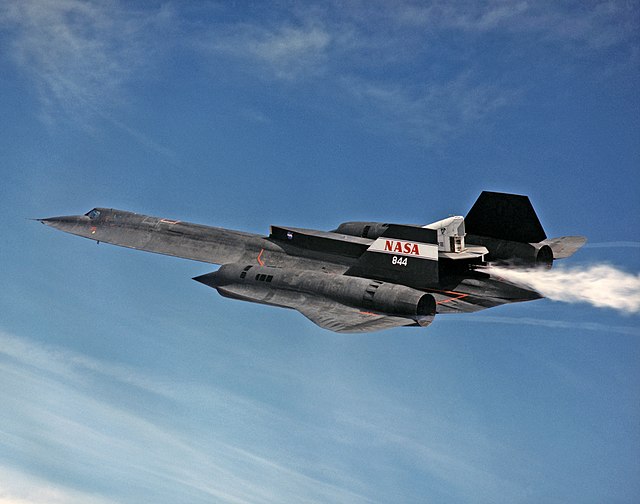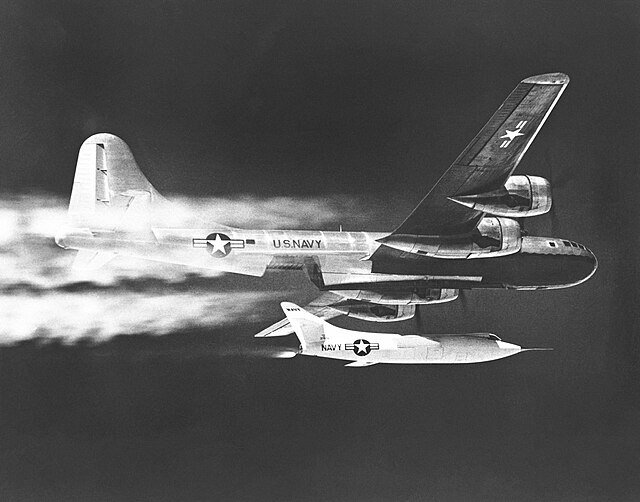Linear Aerospike SR-71 Experiment
LASRE was NASA's Linear Aerospike SR-71 Experiment which took place at the Dryden Flight Research Center at Edwards Air Force Base, California, until November 1998. The experiment sought to provide flight data to help Lockheed Martin validate and tune the computational predictive tools used to determine the aerodynamic performance of the Lockheed Martin X-33 lifting body and linear aerospike engine combination and to lay groundwork for a future reusable launch vehicle.
Closeup of rear of LASRE pod
LASRE cold test dumping water after first in-flight cold flow test - 4 March 1998
Armstrong Flight Research Center
The NASA Neil A. Armstrong Flight Research Center (AFRC) is an aeronautical research center operated by NASA. Its primary campus is located inside Edwards Air Force Base in California and is considered NASA's premier site for aeronautical research. AFRC operates some of the most advanced aircraft in the world and is known for many aviation firsts, including supporting the first crewed airplane to exceed the speed of sound in level flight, highest speed by a crewed, powered aircraft, the first pure digital fly-by-wire aircraft, and many others. AFRC operates a second site next to Air Force Plant 42 in Palmdale, California, known as Building 703, once the former Rockwell International/North American Aviation production facility. There, AFRC houses and operates several of NASA's Science Mission Directorate aircraft including SOFIA, a DC-8 Flying Laboratory, a Gulfstream C-20A UAVSAR and ER-2 High Altitude Platform. As of 2023, Bradley Flick is the center's director.

Neil A. Armstrong Flight Research Center from the air.
The NACA's Douglas D-558-II Skyrocket being dropped from a B-29 Superfortress.
A remotely piloted Boeing 720 is destroyed in the Controlled Impact Demonstration.
A modern Skunk Works project leverages an older: LASRE atop an SR-71 Blackbird.





